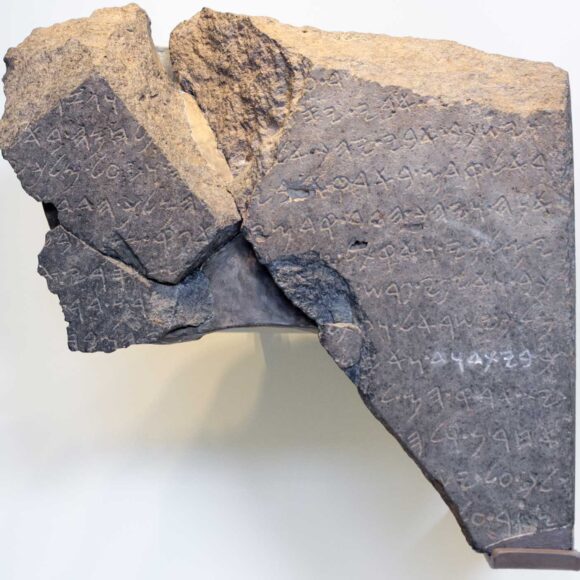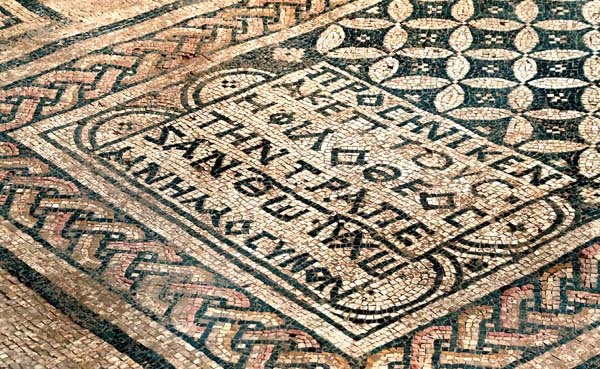Biblical archaeology, the study of the material remains of past cultures that have a connection to the Bible, has seen remarkable advancements in recent years. Technological innovations are allowing archaeologists to glean more information than ever before, providing compelling evidence that often corroborates the historical accounts found in Scripture. These discoveries not only enrich our understanding of the ancient world but also strengthen our faith by providing tangible links to the biblical narrative.
Validating the Scriptures: Recent Archaeological Discoveries
The ongoing work of biblical archaeology continues to illuminate the world of the Bible, offering compelling evidence for the historical accuracy of many biblical accounts. Recent discoveries utilizing cutting-edge technologies have provided fascinating insights into the lives and cultures of the people mentioned in the Scriptures.
Made Known Unto God: Trusting for Direction and Needs
One of the most significant recent finds involves the Dead Sea Scrolls. Scroll fragments dating back almost 2,000 years were discovered in caves near the Dead Sea. These are the earliest known copies of parts of almost every book of the Hebrew Bible, providing invaluable textual evidence and affirming the reliability of the Old Testament text we have today. This echoes the preservation of God’s word throughout history, as referenced in Psalm 119:89, “For ever, O Lord, thy word is settled in heaven.”
Biblical Archaeology and the Old Testament
Numerous discoveries relate directly to events and people of the Old Testament. For instance, the unearthing of the gate of Shiloh at Tel Shiloh brings to life the very place where the priest Eli met his tragic end, as described in 1 Samuel 4:18 when the Israelites lost the ark of the covenant to the Philistines. Finding such a specific location adds a tangible dimension to the biblical narrative.
The discovery of over 1,500 ivory fragments in the ruins of Building 100 near the City of David offers a glimpse into the opulence of ancient Israelite society. These fragments, remnants of plaques that adorned wooden furniture, provide material evidence of the craftsmanship and artistry of the period, perhaps offering a small taste of the grandeur of Solomon’s Temple, though no direct remains of the Temple itself have yet been found.
Furthermore, a radiocarbon study of the 3,000-year-old ruins of Gezer in central Israel has provided intriguing data. The study suggests that David and Solomon’s biblical kingdom may have indeed existed, lending scientific support to the historical accounts detailed in 1 Kings and 2 Chronicles. This supports the historical context of the Old Testament narratives.
The discovery of a large quantity of Canaanite cultic objects at Tel Shimron in northern Israel, including bronze bull figurines and pottery shards, sheds light on the religious practices of the cultures that surrounded ancient Israel. These findings help us understand the context of the Israelites’ struggles with idolatry, as described throughout the Old Testament.
The Tel Dan Stele
The Tel Dan Stele, discovered in 1993 at Tel Dan in northern Israel, is a fragmented basalt stele containing a partially preserved inscription in Aramaic. Dating to the 9th century BCE, the basalt victory stele was erected by King Hazael of Syria after he defeated King Jehoram of Israel and King Ahaziah of Judah. The inscription is engraved with reference to a “king of the House of David” (bytdwd), a direct reference to Israel’s greatest monarch and his royal dynasty, and a match with the Bible’s historical record. The stele provides valuable historical evidence regarding the existence of a Davidic kingdom and its significance in the region during the Iron Age II.
Biblical Archaeology: Illuminating the New Testament
While much of the focus of biblical archaeology has been on the Old Testament, discoveries also shed light on the New Testament period. While not as numerous, these discoveries help us better understand the world in which Jesus lived and the context of the early church. The Roman sword found at a site, for example, reminds us of the Roman presence in Judea during the time of Christ.
The Megiddo Mosaic
The Megiddo Mosaic, recently showcased at the Museum of the Bible in Washington D.C., is an extraordinary archaeological find dating back to around 230 CE. Discovered in Megiddo, Israel, it is the earliest known inscription to identify Jesus as God. The mosaic once adorned the floor of a Christian worship hall within a larger residential building used by Roman soldiers. It features three Greek inscriptions, including one that acknowledges a woman named Akeptous and contains the abbreviated words “God Jesus Christ.” The mosaic also includes decorative and figural motifs, offering insights into early Christian communities in the Holy Land and the prominent role women played within them. This remarkable artifact is not only a testament to early Christian worship but also a significant historical and religious artifact.
Other Recent Discoveries and Their Significance
The wealth of recent archaeological finds continues to grow. Discoveries such as a Ramesside-Era Tomb, Judges-Era Lead Trade, Hezekiah’s Sluice Gate, Vanilla-Laced Vessels from the time of Jeremiah, the ancient gate passage at Tel Erani, Hacksilver from Tel el-Ajjul, and the Solomonic six-chambered gate at Tel Gezer all contribute to our understanding of the biblical world. Each discovery, no matter how small, adds another piece to the puzzle, helping to confirm and illuminate the historical context of the Bible.
The Ongoing Importance of Biblical Archaeology
Biblical archaeology is not about proving the Bible; it’s about understanding the world in which the Bible was written. It provides valuable context, helping us to better understand the historical, cultural, and social settings of the biblical narratives. As technology continues to advance, we can expect even more exciting discoveries in the years to come, further enriching our understanding of this fascinating period of history and its connection to the enduring truths of Scripture. These discoveries serve as a reminder that the Bible is not just a book of spiritual truths but also a book rooted in real history, peopled by real individuals who lived in real places.
Watch this example of biblical archaeology, a fascinating and educational video about the place where Jesus was crucified:
Learn more about biblical archaeology by viewing these links:
https://www.youtube.com/@ExpeditionBible
https://www.christianitytoday.com/2024/12/top-10-biblical-archaeology-disovery-list-2024/
https://www.biblicalarchaeology.org/blog/
https://armstronginstitute.org/more/articles
https://www.immanuel-tours.com/blog/biblical-archaeology-discoveries-in-israel/




